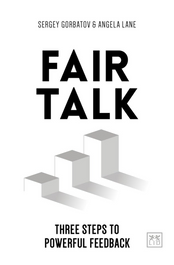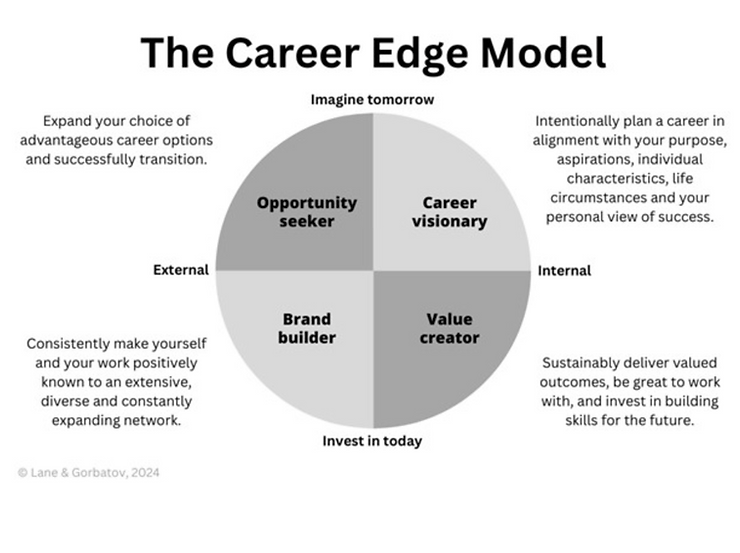Winning the talent management race; Here's the strategist, Sergey Gorbatov
+20 years of experience across diverse industries and geographies.

Collaborating with Angela Lane, he has co-authored two influential books:
Fair Talk: Three Steps to Powerful Feedback and
Move Up or Move On: 10 Secrets to Develop Your Career,
making the complex science of human behaviour simple.


Sergey’s approach is anchored in fast, yet rigorous execution, with experience spanning the FMCG, oil & gas, pharmaceutical, educational, and NGO sectors.
He has a proven track record of success in country, regional, and global roles.
His specialties include Talent Management, Performance Management, Leadership Development, Executive Coaching, Talent Assessment, and Career Management.
Dive deeper into this interview to find out the latest on talent management and strategies in the current global world of work.
Where are we in terms of strategies and systems for talent management today?
How are they changing for the better?
What’s not working?
The landscape of talent management has radically shifted as companies face new pressures, from the scarcity of skilled workers to evolving employee expectations for autonomy and work-life balance.
As businesses transform at unprecedented speeds, the traditional “academy” model for grooming leaders is under strain, with careers becoming more boundary-less and employees less inclined to stay with one employer long-term.
Adding to the complexity, technological advances like AI streamline tasks but risk sidelining essential leadership skills.
At the same time, leaders are now expected to navigate social issues, unite polarised teams, and foster a sense of community in an increasingly scrutinised business world.

With your extensive background in global talent management,
how do you see the integration of AI in talent acquisition strategies today?
What are we missing?
AI is reshaping talent management in exciting ways, making processes more efficient, personalised, and data-driven. It’s speeding up recruitment by quickly finding qualified candidates, automating routine tasks, and identifying skill gaps, helping HR teams work smarter.
AI also enhances the experience for candidates and employees by offering tailored job recommendations, personalised communications, and clear career development paths.
Plus, it provides leaders with valuable insights, helping them spot emerging skill needs and match people to the right roles.
You have extensive experience working across various geographies.
How is Talent Management developing in today’s world of work with hybrid, remote or distributed organisations and teams?
In today’s fast-changing job market, organisations need to do more than just manage talent, they need to help employees actively manage their careers.
The ability to recruit globally has expanded talent pools, giving access to diverse skills and experiences that weren’t always available locally.
Recruitment strategies are shifting, with a strong emphasis on flexibility, remote-friendly assessments, and streamlined video interviews.
Employee experience is also being redefined, with a focus on virtual collaboration, maintaining engagement, and supporting work-life balance.
Performance management is evolving too, with transparent tools and continuous feedback taking centre stage.
Meanwhile, organisations are prioritising employee development through personalised learning and mentoring, all powered by HR tech that makes onboarding, tracking, and decision-making more data-driven than ever.




Why Employees Leave A Company
Credit to Ashley Nicholson, PMP, CSM. Follow her for more posts like this.
Original post:
__________
People don’t leave jobs.
They leave bad bosses and toxic workplaces:
Here are 12 real reasons why employees leave a company (that you can avoid):
1/ Lack of Growth Opportunities:
-No clear path for career advancement or skill development.
2/ Poor Management:
-Toxic leadership or ineffective management practices drive employees away.
3/ Inadequate Compensation:
– Salaries and benefits that don’t match the market or the employee’s value.
4/ Lack of Recognition:
– Hard work and achievements go unnoticed or are unappreciated.
5/ Work-Life Imbalance:
-Excessive work demands that interfere with your personal life and well-being.
6/ Stagnant Work Environment:
-No innovation, creativity, or challenges to keep employees engaged.
7/ Micromanagement:
-Over-controlling managers that stifle autonomy and creativity.
8/ Poor Company Culture:
-A negative or unhealthy work environment.
9/ Unclear Expectations:
– Constantly changing goals and lack of direction lead to frustration.
10/ No Feedback or Development:
-Absence of constructive feedback or opportunities for learning.
11/ Lack of Purpose:
-Employees feel their work lacks meaning or alignment with personal values.
12/ Limited Resources:
-Inadequate tools, support, or staff to effectively perform their job.
And one more (all of the above lead to this):
13/ Burnout:
-Chronic stress and exhaustion from overwhelming work demands.
Thanks for reading.
What are some ways you have helped avoid these and created a positive work environment for your employees?